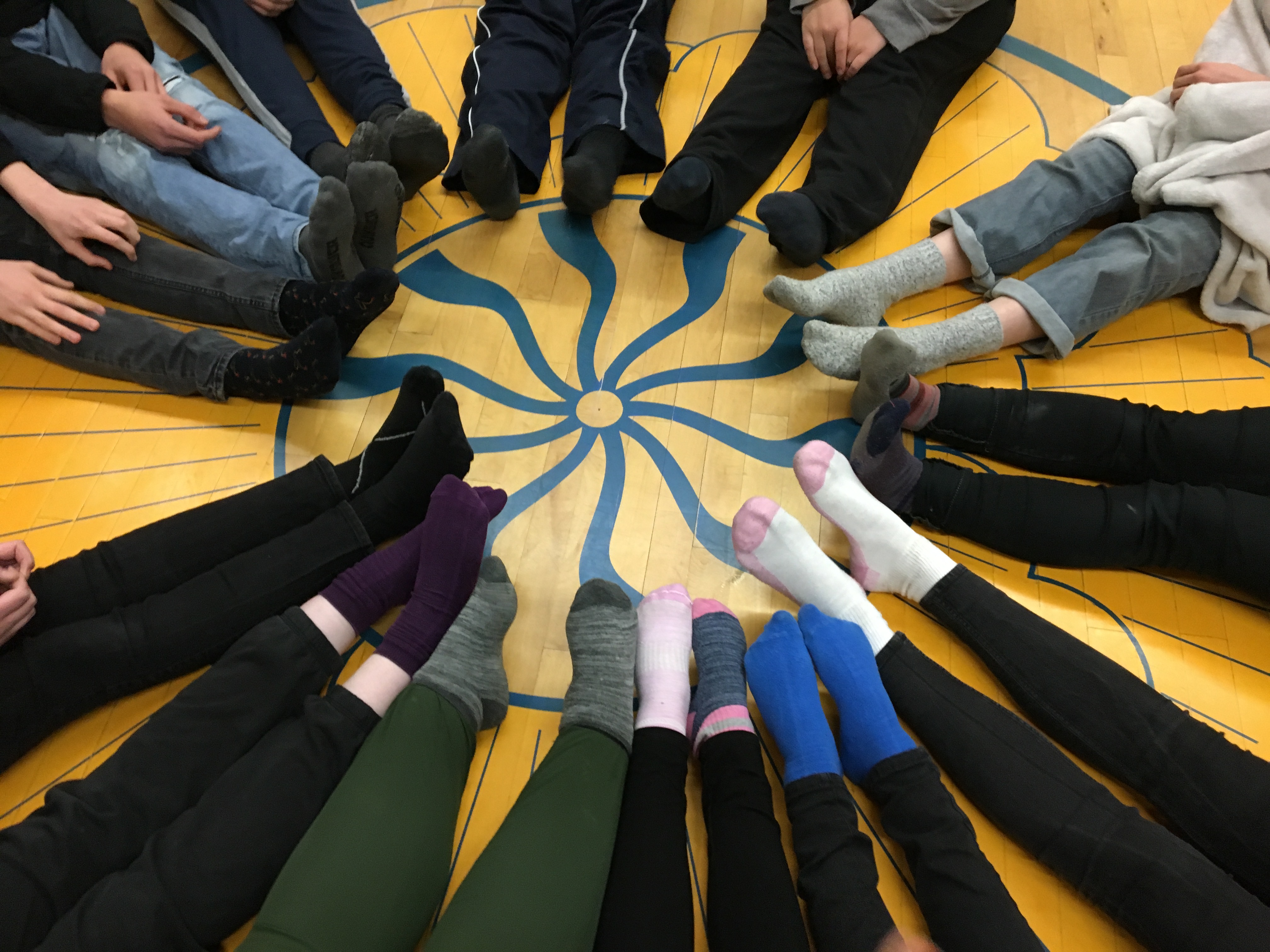View this post on Instagram
~
*This is the author’s second article on themes from his new book, Teaching With Bravery: Meditation and Heart Advice for Teachers.
The first article in the series is here. ~ ed.
~
I was sitting in a coffee shop getting ready to start writing, when I spotted a student from the school where I teach. She also looked over at that moment and gave me a quick, bright smile. We waved. No big deal. But in some small way I felt warmer, nourished, less frozen in my own world.
At school, in the midst of all the chaos, it can be easy to forget about this kind of basic human connection. Teachers have a job to do, and our students have growing up and being social to do. Acknowledging one another as human beings can easily fall off the priority list. And yet, when we forget about these ordinary and simple gestures, our schools become more impersonal, our teaching becomes more transactional, our classrooms become more institutional—and we feel deader inside.
We live in complicated times. In some ways, technology has made us more connected than ever; constant connection is almost a given in our social media spheres and yet, so many of us still feel isolated. We suffer from a deep lack of actual human relationships. We feel separated from ourselves to begin with: ungrounded in our bodies and minds, conflicted in our feelings and thoughts. And we feel separate from others: we all long to be recognized, to be acknowledged, to feel we’re a part of things.
Yet our approach to fulfilling this longing is often backward—rather than softening with curiosity and care for others, we focus on ourselves.
This comes from fear; when we feel afraid that we are insignificant, we puff up, we feel the need to convince ourselves and others that we are valid and real. Such insecurity can lead to self-loathing and aggression. Most of the time, it just shows up as a feeling of being alone in our heads and alone in our world. For young people, living with this kind of isolation can be quite damaging. Young people suffer from losing that connection to themselves, other people, and the natural world. Cut off from its natural source of living vitality, the young heart loses trust in itself and seeks comfort in less meaningful places.
Connection is the medicine that heals this wound of separateness—simple interactions and deeper ones, conversations, a hand held by another hand, a shared meal, shared work and play, eye contact that holds us for a moment in shimmering vulnerability—like a river that flows with life and energy, these ordinary forms of intimacy nourish something deep in us.
I remember the feeling of my son’s body when he was a baby sleeping on my chest. Holding that warm, breathing, trusting human—for a while I felt there was nothing to do and nothing missing. I was saturated in the feeling of connection, relaxation, and aliveness.
Now, I’m in a more wintery season of my life—a time marked with challenges in my community, changes in my life, and loss of close relationships. At times it feels bleak, but I still feel the river of connection flowing around and through me. Sometimes, it is abundant, like at the farmer’s market, and sometimes it’s fleeting, like making space for someone to walk past on the snowy sidewalk. Whenever I acknowledge the world beyond my personal bubble, I feel the energy of connection, like a natural source of vitality.
I’m a school teacher, and I think of teaching, in part, as healing work. Being in the classroom, I feel I have a responsibility to offer something nourishing to my students, and in a modest way, to weave a thread of meaning into our greater culture. This begins with imagining the classroom not as a transactional environment where I dump knowledge into kids’ brains, but as a human place—a space in which each person’s natural human goodness is invited to blossom. In order for this to be real, the culture of my classroom has to lean toward connection.
This means turning my intention in that direction as a starting place. This is not always easy to do. Connecting with others isn’t necessarily about putting out a ton of extroverted energy. Sure, sometimes we might have a “Dead Poet’s Society” moment with a class, but we can also make quiet connections with students just by being in the room with them, or by offering a smile and saying hello. At the school where I work, the elementary teachers greet each student with a handshake as they arrive every morning, and shake their hands again at dismissal. There are many forms we can discover that can help us to connect with students, but the real challenge is not figuring out how to connect—it’s being willing.
Because when we connect, we feel, and feeling is vivid, alive, intimate, and vulnerable. If we aren’t willing to feel, we remain disconnected from ourselves and from others.
When we practice meditation, it’s important that we allow ourselves to feel. Before we attempt to train our minds, we simply feel what is occurring in our experience: in our bodies, our senses, our heads, our emotions. We discover that feelings are like a river; they move and flow, and when we place our hand in the river, we feel connected to ourselves and our world in a living way. By touching this river of feeling in ourselves, we gain familiarity with the energy of connection. This allows us to be more capable of staying open to the feelings and vivid, vulnerable energy that comes with connecting to others.
When we begin to approach teaching as an activity that happens alongside, and in service to, human connection, we quickly come up against challenges. For example, we get busy and habitually shift into efficiency mode. Or we can feel rejected—young people, especially after grade seven or so, may not want to connect with us.
At times, tuning into the many, colorful streams of human feelings in the classroom can feel so raw that we are left feeling defenseless and weepy. Or we may find that we just go numb. These and other challenges are good! They are a sign that we are doing the work of culture change, and we are rubbing up against the boundaries of our inner and outer habits that create separateness.
The main thing is to stay in it with gentleness, not judging ourselves or others for whatever comes up. Just notice that you feel, and remember that all humans feel.
Just step back into the river.
~
 ~
~

 Share on bsky
Share on bsky






Read 3 comments and reply